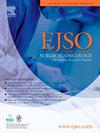Artificial intelligence-based model to predict recurrence after local excision in T1 rectal cancer
IF 3.5
2区 医学
Q2 ONCOLOGY
引用次数: 0
Abstract
Background
According to current guideline, patients with resected specimens showing high-risk features are recommended additional surgery after local excision (LE) of T1 colorectal cancer, despite the low incidence of recurrence. However, surgical resection in patients with low rectal cancer (RC) is challenging and may compromise anal function, leading to a low quality of life. To reduce unnecessary surgical resection in these patients, we used artificial intelligence (AI) to develop and validate a prediction model for the risk of recurrence after LE.
Materials and methods
We constructed an artificial neural network (ANN) to predict recurrence using pathological images from endoscopically or transanal surgically resected T1 RC specimens. Data were retrospectively obtained from two hospitals between 2001 and 2015. The model was constructed using 496 images obtained from the Guangdong Provincial People's Hospital (GDPH), and then validated using independent external datasets (150 images from Sun Yat-sen Memorial Hospital [SYSMH]) to verify its generalizability.
Results
The ANN model yielded good discrimination, achieving areas under the receiver operating characteristic curves (AUC) of 0.979 in the training cohort (GDPH). The AUC for the validation cohort (SYSMH) was 0.978. More importantly, the AI-based prediction model avoided more than 34.9 % of unnecessary additional surgeries compared with the current US guideline in all enrolled patients.
Conclusions
We propose a novel ANN model for the risk of recurrence prediction in patients with T1 RC to provide physicians and patients guidance for decisions after LE. Furthermore, this may lead to a reduction in unnecessary invasive surgeries in patients with T1 RC.
求助全文
约1分钟内获得全文
求助全文
来源期刊

Ejso
医学-外科
CiteScore
6.40
自引率
2.60%
发文量
1148
审稿时长
41 days
期刊介绍:
JSO - European Journal of Surgical Oncology ("the Journal of Cancer Surgery") is the Official Journal of the European Society of Surgical Oncology and BASO ~ the Association for Cancer Surgery.
The EJSO aims to advance surgical oncology research and practice through the publication of original research articles, review articles, editorials, debates and correspondence.
 求助内容:
求助内容: 应助结果提醒方式:
应助结果提醒方式:


